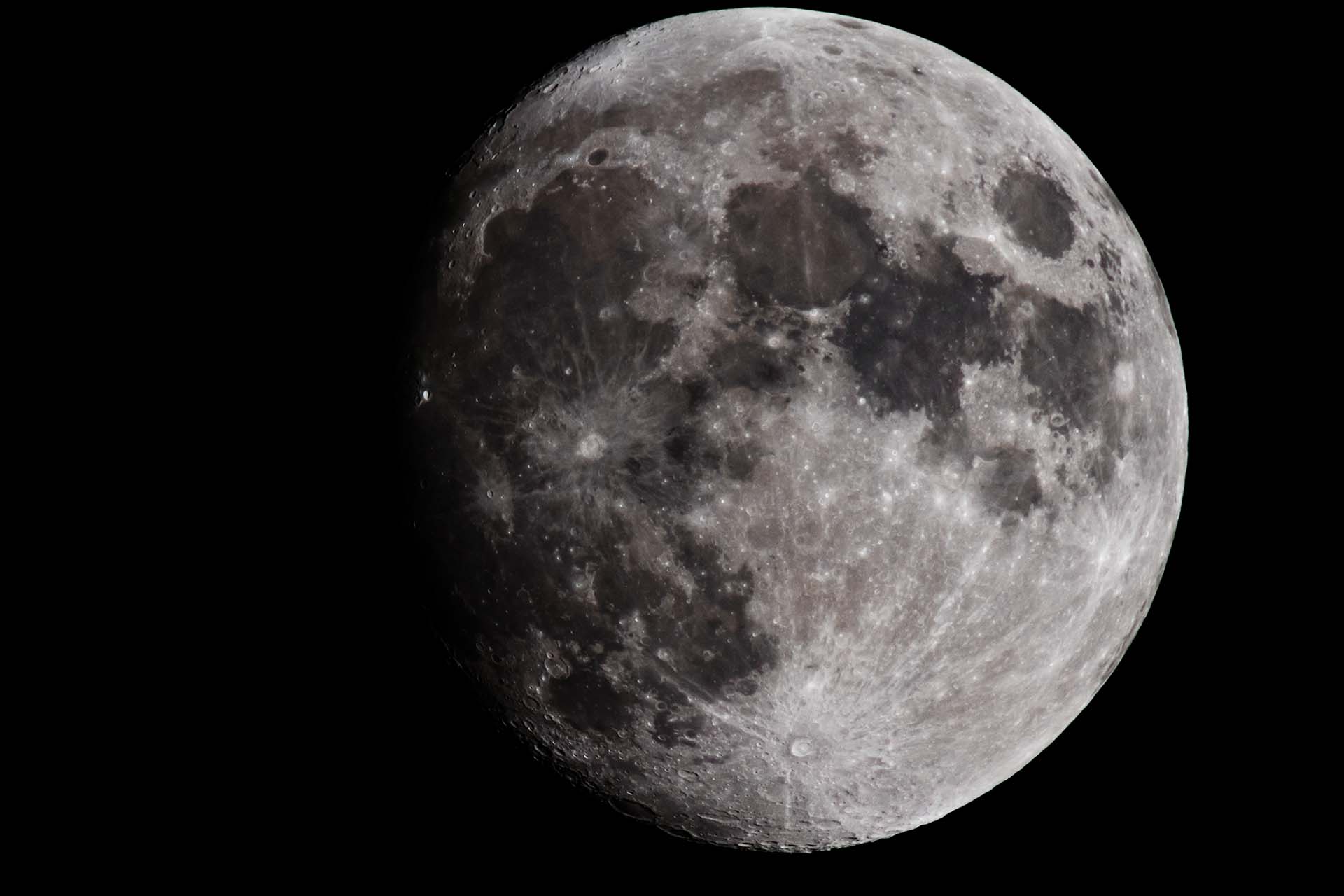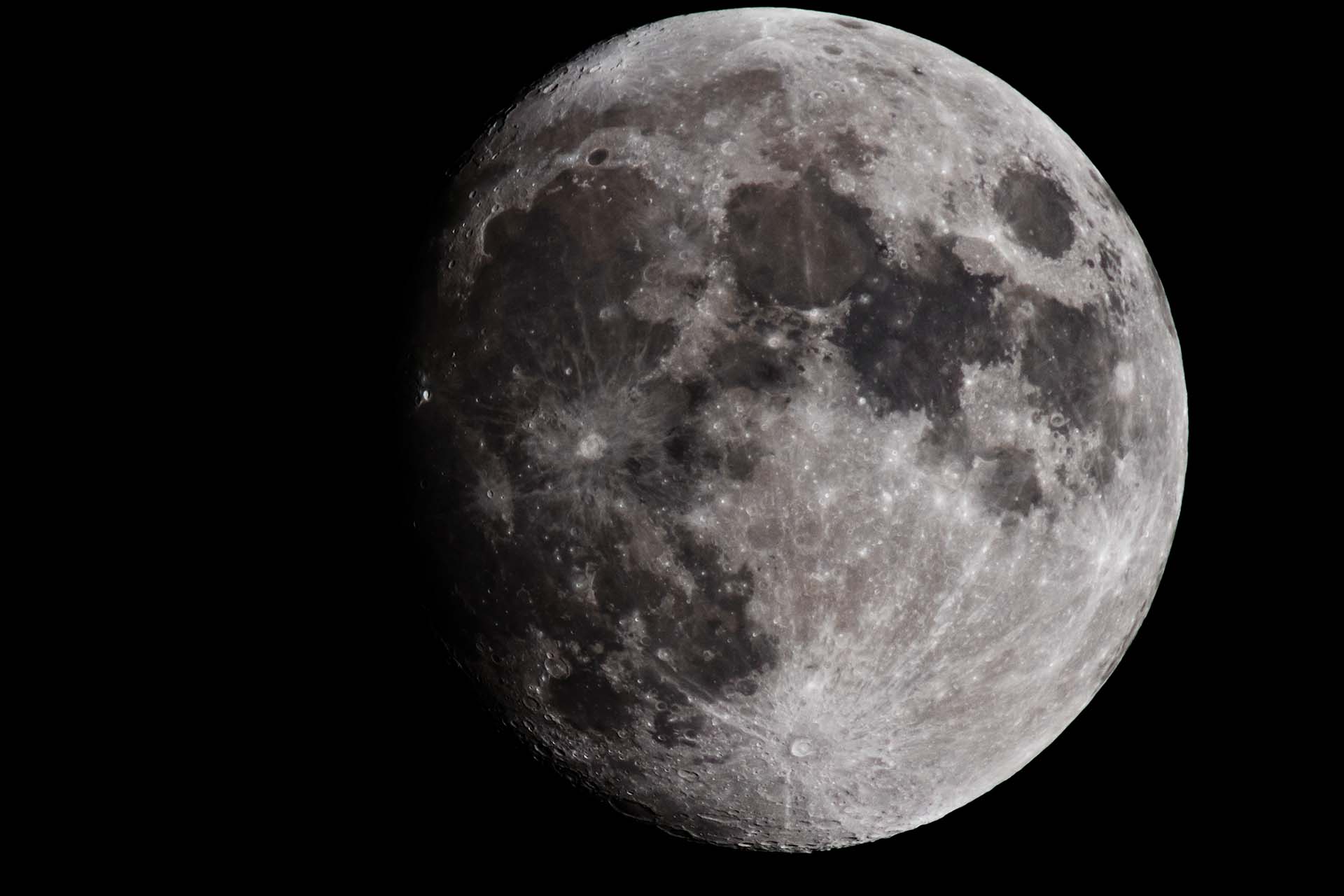How much do you know about the Moon, Earth’s only natural satellite and the fifth biggest natural satellite in the Solar System?
The average center-to-center distance between the Earth and the Moon is 384,403 kilometers. This distance equals to about 30 times the diameter of the Earth. The Moon’s diameter is 3474 km, and its volume is a mere 2 percent of the Earth’s volume.
The Solar System was formed approximately 4.6 billion years ago, and during the first stages of its life, many protoplanets and asteroids were following almost random orbits. Doubtlessly, these wandering motions led to millions of years of collisions and fragmentation, one result of which was Planet Earth, then filled with lava flows and just conveniently followed a regular orbit. According to research and theories, 4.5 billion years ago a Mars-sized protoplanet named “Thea” crashed into the Earth, scattering huge chunks of rocks into space.

After these collisions, the matter scattered into space formed a ring around the Earth. Random formations of this matter gradually merged together due to gravitation, forming the Moon as a satellite to the Earth, and tidal-locking it so we always see the same Moon face.
The Moon’s mass is 81.3 times less than that of the Earth, while the gravity force on its surface is just 17% compared to the Earth. As we all know, the Moon completes its orbit around the Earth in 27 days and 7 hours. Periodic changes in the geometric standing of the Earth, Moon and Sun result in lunar phases that recur every 29.5 days. These lunar phases are the New Moon, Crescent, First Quarter, Waxing Gibbous, Full Moon and Last Quarter.
To observe the Moon, which is the closest celestial object to Earth, you just need a pair of basic binoculars. With that, you can easily discern craters, sea regions of dark color and mountains in light-colored areas. However, the Moon also has a “far side” which cannot be seen from the Earth. One common misconception in this regard is the belief that this side never receives sunlight. However, both sides of the Moon receive the same amount of sunlight. The Moon’s far side is more even than the observable part. Filled with meteorite craters, this side was found to be approximately 26 kilometers thicker than the “front” side in research.

The Moon has many effects on the Earth. Some of these effects are proven, while others have no scientific basis. Still, one of the earliest known evidence is the ebb and flow, which was described in 1687 by the famous scientist Newton in his work “Principia”. According to Newton, ebbs and flows are caused by gravitational forces.
Over the years, mankind’s research on the Moon became more complex, to the point of physical journeys onto the satellite to obtain more realistic evidence. The Luna 1 satellite, launched into space by the Soviet Union on January 2, 1959 from the Baikonur Spaceport with the Vostok Rocket and flying by within 5995 kilometers of the Moon, was the first artificial object to break free from the Earth’s gravity, go into space and do a close flyby to the Moon. On September 13, 1959, the first human touch on the lunar surface occurred when the Luna 2 space shuttle crashed into the craters Aristides, Archimedes and Autolycus, located west of the area called the Sea of Silence on the lunar surface.
Manned lunar missions began with Russia’s attempts to explore space in the 1960s with the Vostok program led by Yuri Gagarin. Naturally not intending to be left behind in this race, the USA realized their first manned mission to the Moon on July 16, 1969 with the Apollo 11 ship. Such a mission was also among John F. Kennedy’s election promises. Apollo 11 with astronauts Neil Armstrong, Buzz Aldrin and Michael Collins entered the lunar orbit on July 20, 1969.
The Sun and the Moon are indispensable for the continuity of life on Earth. The planets and especially the Moon, which are of such great importance for the continuation of life on Earth, also have undeniable effects on human psychology. In Indian Astrology, the Sun is believed to rule our soul, and the Moon is reckoned to control our emotions. It is believed that the Moon increases mental power and helps people prosper. Peace and wealth in people’s lives are explained by the positioning between the Moon and Jupiter.
Although not based on conclusive evidence, there is also ongoing debate positing that the Moon’s movements also have an impact on humans. Some assumptions can be summarized as follows.
The New Moon phase always has positive impact. This phase is believed to bring efficiency to any process, not only about people, but also in production. The foundation of this idea is the increases in temperature and humidity. Increases in body fluids also have certain effects on people.
On the other hand, a full moon is known for its negative influence. Exerting a pulling force on people, the Moon causes bodily fluids to increase, leading to certain spiritual changes. The waning phase is expected to bring negativity since it reduces the amount of blood in veins.
The Moon’s zodiac sign position can affect you in relation to your Moon sign and the other planets in your birthchart. You can find out your moon sign from your birth chart.


